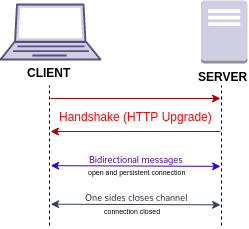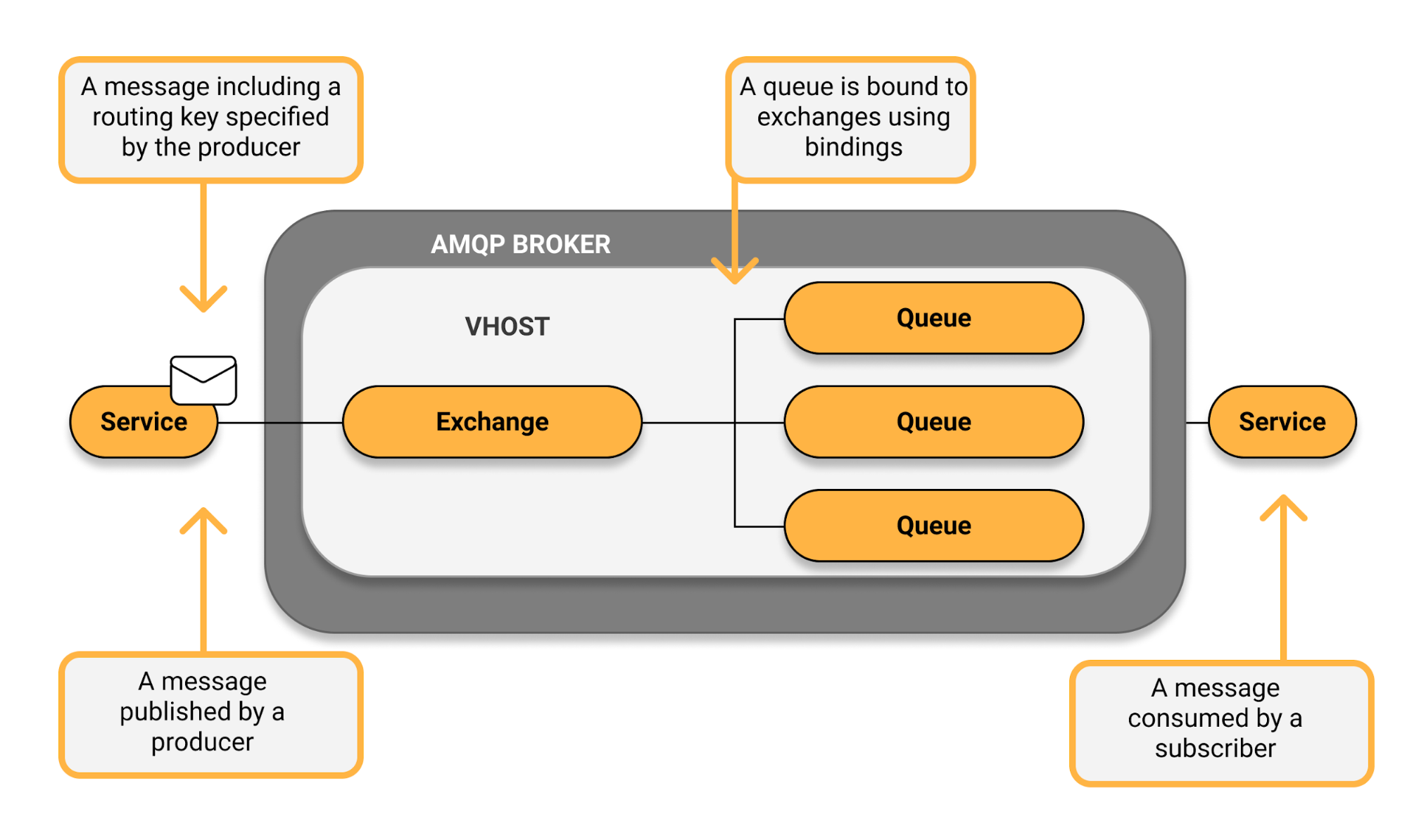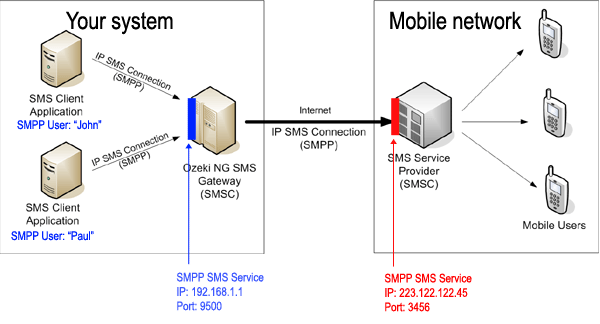A Comprehensive Guide to Communication Protocols for Cloud-Based APIs on AWS, Azure, and GCP
 Venkata Pavan Vishnu Rachapudi
Venkata Pavan Vishnu RachapudiTable of contents

APIs (Application Programming Interfaces) allow different software systems to communicate with each other, providing a way to retrieve, send, or manipulate data across applications. In the cloud environment, where services need to interact seamlessly across distributed systems, choosing the right communication protocol is essential. Let’s look deeper into the protocols available across AWS, Azure, and GCP and discuss when and how each is best used.
Different types of protocols
🌐 1.HTTP/HTTPS – The Foundation of REST APIs
HTTP (Hypertext Transfer Protocol) is the backbone of the internet, used primarily to transfer data between web servers and clients. When secured with SSL/TLS, HTTP becomes HTTPS, providing encryption for secure data transfer.
Primary Use: The most common protocol for RESTful APIs, which are stateless, meaning each request from a client to the server must contain all information needed to understand and process the request.
Why REST?
Statelessness: Makes it scalable and suitable for web-based applications.
Cacheability: Supports caching, which improves performance.
Wide Adoption: Compatible with almost every modern system.
Cloud Support:
AWS: Provides AWS API Gateway for REST APIs.
Azure: Supported via Azure API Management.
GCP: Available with Google Cloud API Gateway.
Example Use Case: E-commerce applications where clients retrieve product data by sending HTTP requests to RESTful endpoints.
![Part 2] REST API components & How to read them](https://kajabi-storefronts-production.kajabi-cdn.com/kajabi-storefronts-production/file-uploads/blogs/2147485434/images/c133f1a-3db5-f52b-0c6e-1ef6a306c8d_REST_API_Model.png)
🛠 2.GraphQL – Flexible Data Queries
GraphQL is an open-source query language and runtime developed by Facebook. It offers a different approach to data fetching compared to REST, allowing clients to specify exactly what data they need in a single query.
Primary Use: Designed for dynamic applications that need to interact with complex data structures without over-fetching or under-fetching data.
Why GraphQL?
Single Endpoint: Only one endpoint is required for all queries, unlike REST, where each resource might need its own endpoint.
Customizable Queries: Clients request only what they need, which can minimize data transfer and improve performance.
Real-Time Capabilities: Supports subscriptions for real-time updates.
Cloud Support:
AWS: Built into AWS AppSync for GraphQL APIs.
Azure: Supports custom GraphQL integrations in Azure API Management.
GCP: Supported through custom implementations.
Example Use Case: Social media applications where clients need varied data types like user profiles, posts, and comments, which can be customized based on client requirements.
🔄 3. WebSocket – Real-Time, Bidirectional Communication
WebSocket is a communication protocol providing full-duplex (two-way) communication channels over a single, long-lived connection. This is ideal for real-time applications where clients and servers need to exchange data frequently without reopening connections.
Primary Use: Real-time applications needing continuous data exchange, such as chat apps, gaming, or financial services.
Why WebSocket?
Persistent Connection: Unlike HTTP, WebSocket keeps a connection open, enabling faster real-time communication.
Reduced Latency: Cuts down on latency by avoiding the need to reestablish a connection for each message.
Cloud Support:
AWS: Available via AWS API Gateway for WebSocket APIs.
Azure: Supported by Azure Web PubSub.
GCP: Custom WebSocket integrations can be implemented.
Example Use Case: Instant messaging services where clients need to receive live updates without delays.

📧 4. MQTT – The IoT Protocol
MQTT (Message Queuing Telemetry Transport) is a lightweight protocol used in IoT (Internet of Things) networks. It follows a publish-subscribe model, which is highly efficient for devices with limited power or bandwidth.
Primary Use: Optimized for IoT networks where devices periodically send small data packets to the cloud.
Why MQTT?
Low Overhead: Its lightweight nature minimizes power and bandwidth usage, ideal for constrained IoT devices.
Reliable Delivery: Offers three Quality of Service (QoS) levels for message delivery.
Cloud Support:
AWS: Available via AWS IoT Core.
Azure: Supported on Azure IoT Hub.
GCP: Integrated with Google Cloud IoT Core.
Example Use Case: Smart home systems where IoT devices send periodic updates or alerts to a central server.

🔐 5. gRPC – High-Performance Data Transfer
gRPC (Google Remote Procedure Call) is an open-source RPC framework initially developed by Google. Built on HTTP/2, it’s known for high performance and supports language-neutral calls between services.
Primary Use: Microservices and data-intensive applications needing high-speed communication between services.
Why gRPC?
Efficient Data Transfer: Supports protocol buffers (Protobuf), which are compact and faster than JSON.
Multiplexed Streams: HTTP/2 enables multiple streams over a single connection.
Bi-Directional Streaming: Ideal for complex applications that need continuous communication.
Cloud Support:
AWS: Can be configured with AWS API Gateway.
Azure: Supported via Azure API Management.
GCP: Built-in support since Google developed gRPC.
Example Use Case: Financial applications performing real-time analytics on large datasets or high-frequency transactions.
📬 6. AMQP – Reliable Message Delivery
AMQP (Advanced Message Queuing Protocol) is a message-oriented protocol primarily used for reliable, secure message delivery. Often found in enterprise-grade systems, AMQP is suitable for applications that prioritize guaranteed delivery.
Primary Use: Complex enterprise messaging systems where reliable delivery is essential.
Why AMQP?
Guaranteed Delivery: Ensures messages are received, even if components temporarily fail.
Message Routing: Built-in mechanisms for routing, queuing, and delivery guarantees.
Cloud Support:
AWS: Available via Amazon MQ.
Azure: Supported on Azure Service Bus.
GCP: Can be configured with Google Cloud Pub/Sub.
Example Use Case: Banking applications that need robust, guaranteed message delivery for transactions.

🔒 7. SMPP – The Telecom Protocol
SMPP (Short Message Peer-to-Peer Protocol) is a protocol used for exchanging SMS messages between applications and mobile networks.
Primary Use: Sending and receiving SMS messages, particularly in telecommunications.
Why SMPP?
Reliable SMS Delivery: Designed specifically for high-throughput SMS applications.
Supports High Volume: Efficient for large-scale SMS applications.
Cloud Support:
- AWS & Azure: Custom integrations via third-party SMS gateways.
Example Use Case: Notification systems that send SMS alerts, such as logistics companies sending delivery updates to customers.

📝 Choosing the Right Protocol for Your Application
Each protocol has its strengths and is suited for particular types of applications:
REST (HTTP/HTTPS): Reliable and scalable for general-purpose web applications.
GraphQL: Best for flexible, data-heavy applications where clients require specific data subsets.
WebSocket: Essential for real-time applications needing continuous communication.
MQTT: Ideal for IoT applications with low-power or limited-bandwidth devices.
gRPC: Highly performant for microservices and data-intensive applications.
AMQP: Designed for applications needing reliable and ordered message delivery.
SMPP: Primarily for high-volume SMS-based applications.
By understanding these protocols, cloud developers and architects can choose the most suitable communication method to optimize API performance, data transfer efficiency, and scalability across AWS, Azure, and GCP.
Subscribe to my newsletter
Read articles from Venkata Pavan Vishnu Rachapudi directly inside your inbox. Subscribe to the newsletter, and don't miss out.
Written by

Venkata Pavan Vishnu Rachapudi
Venkata Pavan Vishnu Rachapudi
I'm Venkata Pavan Vishnu, a cloud enthusiast with a strong passion for sharing knowledge and exploring the latest in cloud technology. With 3 years of hands-on experience in AWS Cloud, I specialize in leveraging cloud services to deliver practical solutions and insights for real-world scenarios. Whether it's through engaging content, cloud security best practices, or deep dives into storage solutions, I'm dedicated to helping others succeed in the ever-evolving world of cloud computing. Let's connect and explore the cloud together!
